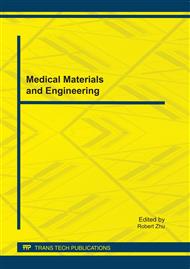p.244
p.248
p.253
p.258
p.263
p.268
p.273
p.278
p.286
Antioxidant Activity and Total Phenolics of Broussonetia papyrifera Flower Extracts
Abstract:
Ethanol and water crude extracts from the flower of Broussonetia papyrifera were investigated for their antioxidant capacity in four different assays, namely, the 1,1-diphenyl-2-picrylhydrazyl (DPPH) radical scavenging activity, chelation of metal ions (Fe2+), reducing power and inhibition activity of lipid peroxidation in a linoleic acid emulsion system. Among the two extracts, the ethanolextract from B. papyrifera flower showed the most potent radical scavenging activity in each assay, showing 62.88.9% (at 5 mg/ml) in the DPPH radical scavenging method (at 6 mg/ml) and 61.15% of chelation Fe2+- activity. Total phenolics in the water extracts were higher than that of the ethanol ones. Positive correlations were found between total phenolic content in the B. papyrifera flower extracts and their antioxidant activities. B. papyrifera flowers may have potential as natural antioxidants.
Info:
Periodical:
Pages:
263-267
Citation:
Online since:
November 2011
Authors:
Price:
Сopyright:
© 2012 Trans Tech Publications Ltd. All Rights Reserved
Share:
Citation:


